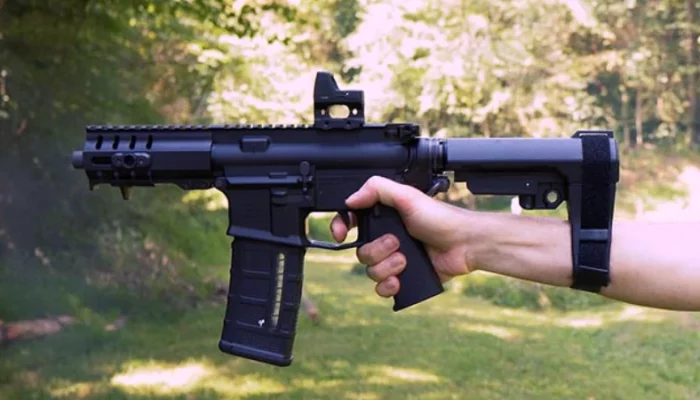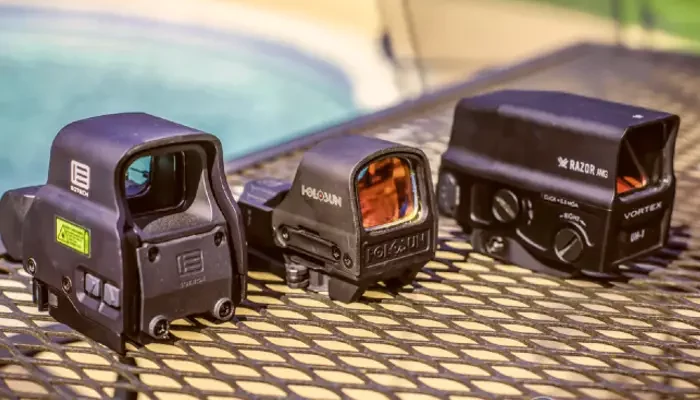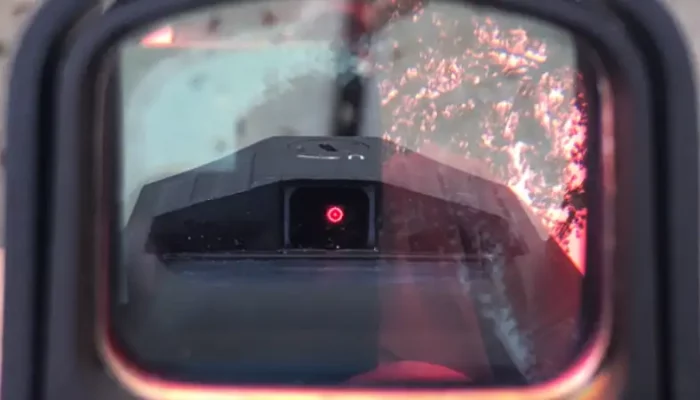I, along with my friends, arranged a campfire in a jungle. We had organized a competition on quarrying big animals. One of our friends had a good-quality rifle scope, but he could not do much with his rifle.
So, when I checked his scope, it was not correctly set up. Then, I taught him how to optically check a rifle scope. After reviewing and testing the scope, he was doing his best.
So, today we are going to give you some tips and tricks about checking the rifle scope optically.
What Is Rifle Scope?
A telescopic sight is an optically sighting device that is based on a refracting telescope. It is commonly known as scope.
It’s equipped with a form of graphical image pattern, also known as a reticle mounted on an exact position in the optical system of the gun to a precise aiming point.
It is mostly used in all sorts of firearms, especially rifles. The telescopic sight or scope in a rifle is known as a rifle scope.
Parts Of The Rifle Scope
A rifle scope consists of a few parts. These are as follows:
Ocular Lens
The ocular lens is the piece of glass that faces the shooter while aiming. It is smaller than the objective lens.
Eyepiece
The eyepiece is the portion of the rifle scope that stabilizes the ocular lens.
Power Ring
The part of the rifle scope that helps you to adjust the magnification of the lens is called the power ring.
Scope Tube
The solid metal part of the rifle scope that connects the objective lens and ocular lens is the scope tube.
Windage Turret
The windage turret is located on the right side of the scope and is used to adjust the horizontal alignment of the reticle.
Elevation Turret
The elevation turret is at the top of the rifle scope. It is used to adjust the vertical alignment of the reticle.
Parallax Error Adjustment
The parallax error adjustment is the third turret that adjusts the parallax error taking place in the rifle scope. It is located across the windage turret to the left side of the scope.
Objective Bell
The objective bell is the portion that increases its size from one inch to 30mm scope tube up to the objective tube. It also holds the objective lens in place.
Objective Lens
It is the forward-facing lens that has a single objective to gather light surrounding the target ranging from you. It is also larger than the ocular lens.
How Does It Work?
A rifle scope is mostly based on a refracting telescope. It is such an optical sighting device that will magnify the target at a distance and help in aiming at it accurately.
The optical parts of it are coated to reduce internal light loss and glare.
How To Optically Check A Rifle Scope?
There are mainly two ways to check a rifle scope. These are:
1. Calibrating Reticle Click
Firstly, take a yardstick or a 4-foot carpenter’s ruler. For proper visibility place, 1-inch Shoot’N’C dots every inch accurately and carefully on the stick.
Now, place the stick at a vertical position in an exact 100 yards distance. You can use long steel tape for better measurements.
Then, place the rifle in a good hold or rest. You can use sandbags for this. Now, you need to aim your center crosshairs at the stick with your 100-yard-zero on the rifle having your highest magnification.
Take assistance from anybody to crank on 36 MOA and keep the rifle still
You will notice that with every click, the reticle will move downwards to the bottom of the stick. Now, you will note where on the stick the center crosshair rests in inches when it is done.
You must repeat this several times. If your scope is calibrated on the true MOA, then the reticle will move about 37.75 inches during the process. If it is calibrated at the shooter’s MOA which is known as inches per 100 yards, it will be 36 inches.
You might get any figure, but you will have a scale factor to apply on the scope which will tell you how much the reticle will move at 100 yards every time you click.
The same process will go by at larger distances. You can also use this procedure to check the scope which adjusts in 0.1 milliradian clicks. 10 miles will cover 36 inches at 100 yards.
If you follow this procedure, you can successfully check a rifle scope & you will be sure that the reticle is accurate in a vertical process. However, this process may seem to be complicated.
2. By Using Focal Plane Scopes At Half Power
In the case of some scopes, they come with reticles in milliradians, MOA or inches per hundred yards placed in the second focal plane.
To determine if the reticle is in the second focal plane or not, make sure that the size of the reticle does not change as you adjust the scope power.
Now to perform this procedure, you need a 7foot piece of lumber and mark with three Shoot’N’C dots with any visible mark at 3 feet apart. Then, you need to place it 100 yards apart.
Make sure that the reticle is at full power and check to see that the top or bottom thick reticle marks fall on the dots 3 feet apart which may be either the top set or the bottom one that 10 miles apart.
If it doesn’t fall on the mark, then the reticle spacing at full power is incorrect. If that is the case, then dial another power where it is accurately 10 miles apart.
Moreover, if that is the case, make a new mark on the power ring where you want the scope at range calculations using the reticle at full power.
Dial-up to the point the reticle enlarges to the maximum and subtends the marks on the stick. It will be the point at which the scope is half-power.
Mark a durable point on it and do not be surprised if it doesn’t reach the manufacturer’s mark. Furthermore, the field view is now twice. Use the reticle in the new power and aim at moving objects 10 miles apart and cutting them in half.
This procedure can be used for any scope reticle graduated at any unit, simply by changing the measurements to an appropriate unit.
Conclusion
I guess all of the confusion about how to optically check a rifle scope has already been solved. If you follow the instructions and take care of your scope.
I think you are not going to face any trouble. Last but not least, know well about all the parts of your rifle to have a good shot.
Hi, I’m Brent Hansford. A writer turned hunter & now sharing my love for the sport through writing. As I practically breathe weapons, I firmly believe I’m capable of providing you with new knowledge about firearms and hunting. My mission is to help more people get better at hunting & master the weapons. Let me help with unleashing the beast within you!



